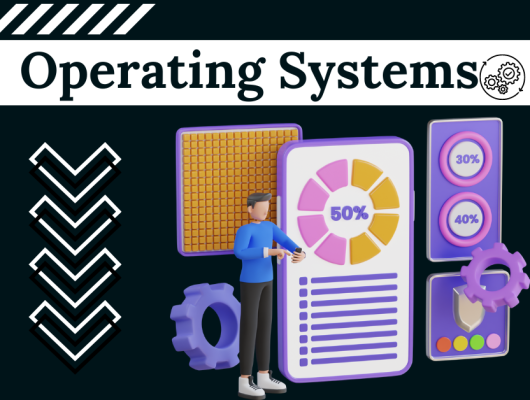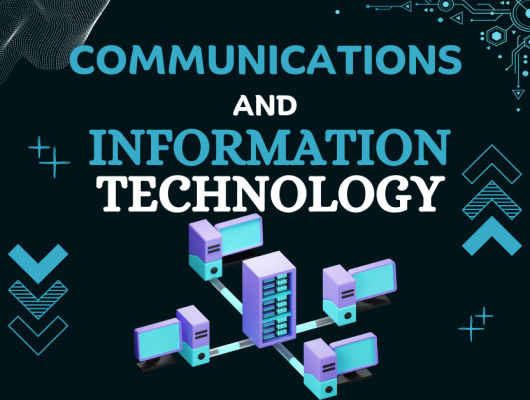The term “information system” may seem daunting to many who come across it for the first time. Some may think of it as just a fancy name for a complex piece of software, but in reality, it’s a much bigger concept. An information system is a strategic combination of software, hardware, and telecommunication networks designed to collect and manage useful data, especially for businesses and organizations in the realm of information technology.
Technology encompasses diverse types, from Information Technology (IT) to Biotechnology, Nanotechnology, and Robotics. Examples include smartphones, genetic engineering, nanomaterials, and automated systems transforming various industries.
what is a system in information?
An information system is an interconnected set of components that work together to collect, store, process, and transmit data or digital information. At its core, an what is a system in information system comprises hardware, software, data, and people. These components and processes collectively form the backbone of an what is a system in information, transforming raw data into useful information. The primary purpose of an what is a system in information is to support business objectives, leading to improved customer service and increased efficiency.
How does an information system work?
The basic process an IS follows involves several key steps. Firstly, through input, the system collects data from various sources such as sensors, keyboards, scanners, and databases. The processing step then transforms raw data into meaningful information by applying operations like sorting, classifying, calculating, analyzing, and synthesizing. The storage component securely stores the processed information in a structured way, utilizing databases, file systems, or cloud storage. Subsequently, the system presents information to users in a usable format, including reports, graphs, charts, and dashboards. Additionally, the system collects feedback from users and stakeholders to evaluate performance and improve the design and functionality.
Typical components of information systems
What is a system in information system? An Information System (IS) is composed of a variety of components, including both physical and software elements. These components play an important role in the overall functioning of the system, providing users with access to servers, storage space, data, and various programs and applications that make up the system. Networks, such as local area networks (LANs), wide area networks (WANs), intranets, and cloud networks.
Play a crucial role in interconnecting different components, allowing user access within an organization. Operating systems like Windows and Linux serve as the underlying platforms on which databases, enterprise applications, and hundreds of different software applications run. These large software packages are designed to integrate multiple applications, forming an integral part of the IS.
Types of information systems
Information Systems play a crucial role in optimizing businesses by efficiently managing operations and defining the types of IS. These systems encompass a variety of entities, each contributing to the overall functionality and importance of information within an organization. Understanding the characteristics of different Information Systems is vital for enhancing efficiency and ensuring the seamless flow of information.
Management information systems
Management information systems (MIS) are computerized systems that collect, store, and process data to support management decision-making. In a hospital setting, MIS plays a crucial role in managing patient admissions, tracking treatments, and assessing outcomes. Administrators rely on this information system for informed decisions regarding resource allocation and process improvements. The seamless integration of MIS ensures a streamlined approach to healthcare management, enhancing overall efficiency in the dynamic environment of a hospital.
Knowledge work systems
Understanding what is a system in information systems is crucial for knowledge workers. These individuals engage with complex computer-based systems to efficiently carry out their tasks. In the realm of marketing, these professionals use information systems to analyze customer data, track marketing campaigns, and generate reports and presentations for marketing materials. By leveraging NLP, these systems extract related words and topics, separate them with commas, and shuffle lines to deliver relevant and engaging content. This seamless integration of technology enhances the overall efficiency and effectiveness of knowledge workers in diverse fields.
Decision support systems
Business intelligence systems play a crucial role in providing users with the ability to explore and analyze data, ultimately aiding in better decision support. These systems empower organizations to gain valuable insights into their business performance. For instance, in a retail chain, such a system can efficiently collect and manage data related to inventory, guiding strategic changes in inventory management and optimizing marketing campaigns.
Transaction processing systems
An information system is a structured framework designed to produce, consume, and manage data efficiently. In the context of a bank, an information system plays a crucial role in handling various aspects of customer transactions, including deposits and withdrawals. This robust system not only facilitates these financial operations but also ensures the accurate recording and timely updating of account balances.
Executive information systems
Executive information systems (EIS) play a significant role in supporting senior executives within an organization. Designed for the CEO and other high-level decision-makers, EIS provides real-time information through analytical tools. This type of system is intended to support strategic decision-making by giving executives access to critical data on financial performance, market trends, and the competitive landscape. Its significance lies in the ability to adjust to the dynamic business environment, offering a tailored approach to the unique needs of senior leadership.
Managing information systems
Understanding what IS (Information System) entails is crucial for effective management and maintenance. Professionals must comprehend the system’s capabilities and the needs of users to meet business requirements. Adapting to changing technologies is essential, and hiring specialists in the area ensures that the existing system evolves to address new challenges, allowing businesses to run the system effectively.
System security

In an information system (IS), maintaining robust security is critical to safeguard against various threats such as hacking, viruses, and malware. Systems are inherently vulnerable to unauthorized access, making it imperative for administrators to implement a wide range of protective measures. This includes employing access control, firewalls, and intrusion detection and prevention systems. Additionally, utilizing antivirus software and incorporating data encryption helps fortify the system against potential breaches. To stay ahead of evolving risks.
Data management
In an information system, effective data management is paramount for maintaining the accuracy, consistency, and integrity of information. IS administrators play a crucial role in implementing robust data backup processes to mitigate the risk of data loss due to system failures or unforeseen disasters. Ensuring that data is stored in a structured, organized manner allows it to be easily accessed and analyzed when needed. Additionally, prioritizing data security through robust data access controls and encryption mechanisms safeguards against unauthorized access and helps prevent data breaches.
Network management
In an information system, network management plays a crucial role in maintaining the health and functionality of the overall network infrastructure. This responsibility falls on the shoulders of skilled IS administrators who specialize in configuring and optimizing elements such as routers, switches, and servers to ensure optimal performance. Their daily tasks involve monitoring and troubleshooting network issues, addressing concerns related to traffic management, congestion, and delays. Additionally.
System maintenance
In information systems, a system is a complex network of hardware and software components working together to achieve specific goals. IS administrators play a crucial role in ensuring the efficiency of this system. They must regularly perform tasks like system updates and hardware upgrades to keep the system running smoothly. The implementation of a robust patch management process is also vital for addressing security vulnerabilities.
User support
Information Systems (IS) play a pivotal role in modern organizations, offering a framework that enables users to perform their jobs effectively. Administrators must ensure access control to safeguard sensitive information. Regular training is necessary to assist users in using the system successfully. A robust help desk is crucial to offer support when users encounter problems. NLP related technologies can also be employed to enhance user interaction and support. Administrators must rely on access control mechanisms to ensure that users have access only to job-appropriate data, thus maintaining a secure environment.
Information systems jobs and education
In the dynamic landscape of Information Systems (IS), professionals with a combination of technical and business acumen are in high demand across various industries. Companies seek candidates with a solid understanding of IS components, processes, and a robust skill set encompassing computer programming languages, database management, data analysis techniques, network design, and security principles. An education in computer science or a related field, often at the bachelor’s degree level or higher, provides the foundation for a successful career in IS jobs.
Internal information systems development
In the system life cycle, the journey begins with a feasibility study, assessing the desirability and aligning with long-term plans and strategic initiatives. This initial stage is crucial in conducting a thorough cost-benefit analysis for the proposed information system. Moving to the next stage of system analysis, it involves providing a detailed answer to the organizational needs, paving the way for the development of a new and improved system.
Conclusion
In the context of an information system, a “system” refers to an organized and interconnected set of components that work together to achieve specific objectives, such as processing, storing, and managing information. It serves as a cohesive framework for efficient data handling and decision-making within an organization.
Common Question of information system
What is a system in business information systems?
Business information systems provide information that organizations use to manage themselves efficiently and effectively, typically using computer systems and technology. Primary components of business information systems include hardware, software, data, procedures (design, development, and documentation) and people.
What are the three types of system?
There are three basic types of systems which we may encounter – (a) rational, (b) natural and (c) open (Scott & Davis, 2007).
What are the five features of computer?
Five of these are: Speed, storage capacity, productivity, reliability and efficiency. Without these characteristics, a computer would not be the system that we know it as. A computer has the capability to process several complex calculations and programs at the same time.
What is the full form of GB?
GB stands for GigaByte. A digital storage unit that is a multiple of a byte is called a gigabyte. One gigabyte is 1000000000 bytes in the International System of Units (SI), where the word “Giga” stands for 109.







